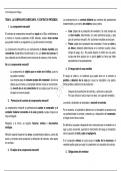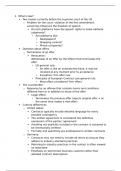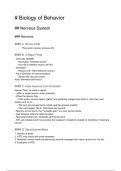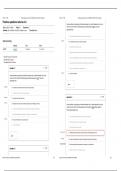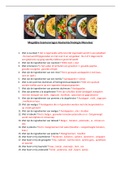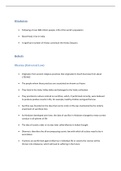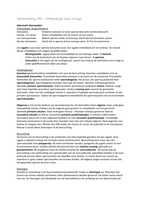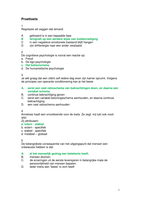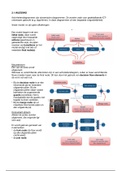,© 2019 University of South Africa
Revised edition 2009 and 2019
All rights reserved
Printed and published by the
University of South Africa,
Muckleneuk, Pretoria
IOS2601/1/2020–2025
70728658
Shutterstock.com images used
Editor and Styler
HSY_Style
, CONTENTS
Foreword (iv)
SECTION A 1
Study unit 1: General introduction 2
Chapter 1: Introduction 3
SECTION B 7
Study unit 2: The legislative process 8
Chapter 2: What is legislation? 9
Study unit 3: Commencement of legislation 13
Chapter 3: Is it in force? The commencement of legislation 14
Study unit 4: Demise and amendment of legislation 18
Chapter 4: Changes to and the demise and amendment of legislation 19
SECTION C 25
Study unit 5: The interpretation process 26
Chapter 5: How legislation is interpreted 28
Study unit 6: The five interrelated dimensions of interpretation 39
Chapter 6: A practical, inclusive methodology: The five interrelated
dimensions of interpretation 40
Study unit 7: Judicial law-making during concretisation 48
Chapter 7: Judicial law-making during concretisation 49
SECTION D 55
Study unit 8: Noncompliance with legislation 56
Chapter 8: Peremptory and directory provisions 57
SECTION E 65
Study unit 9: Constitutional Interpretation 66
Chapter 9: Constitutional Interpretation 67
IOS2601/1/2020–2025 (iii)
, FOREWORD
How to get the best out of this study guide
Welcome to this course in the Interpretation of Statutes (IOS2601). We trust that
you will find your learning experience intellectually stimulating and personally
enriching. As we indicated in Tutorial Letter 101 for this academic period, your
study package for this course consists of three things:
● a prescribed textbook that you must purchase yourself (Christo Botha Interpreta-
tion of statutes: an introduction for students (2012 5th ed)
● this study guide, which you received at registration
● a series of tutorial letters, which you will receive during the semester
The prescribed textbook contains the bulk of the prescribed material that you have
to study for this course. This study guide contains a number of additional court
cases that must also be studied for the examination. Apart from these cases, the
study guide does not contain any other prescribed material.
The purpose of the study guide is to guide you through the prescribed textbook by
providing additional explanations and examples from case law, activities based on
each prescribed section of the textbook, and feedback on those activities. Please
complete all the activities, as many of them contain additional cases that must be
studied for the examination.
The format of this study guide is the same for each chapter of the prescribed
textbook. We begin by identifying the chapter of the prescribed textbook that you
have to study. We then provide general comments about the nature and importance
of the chapter and the problems it deals with. We go on to discuss the sections in
the chapter one by one. You might be asked to complete a number of activities as
you work through each section. Feedback is provided on these activities. If you find
it difficult to complete any of the activities, it is a good indication that you have not
yet mastered the material. Work though the section again, discuss it with fellow
students or contact one of your lecturers and then return to the activity. In some of
the chapters, we also discuss court cases in detail. You must study these cases
carefully. Each study unit concludes with a list of self-assessment questions.
Some of the study units also contain a section entitled “Food for thought”. The
aim of these sections is to stimulate further thought. You need not study these
sections for the examination.
By following the above-mentioned structure, you will work your way systematically
through the whole textbook. Since every student’s personal circumstances differ,
we do not provide a detailed study programme in this study guide.
The study guide is divided into a number of smaller themes or sections. It begins
with an introduction to the subject (chapter 1). The next three chapters (chapters 2
(iv)
Revised edition 2009 and 2019
All rights reserved
Printed and published by the
University of South Africa,
Muckleneuk, Pretoria
IOS2601/1/2020–2025
70728658
Shutterstock.com images used
Editor and Styler
HSY_Style
, CONTENTS
Foreword (iv)
SECTION A 1
Study unit 1: General introduction 2
Chapter 1: Introduction 3
SECTION B 7
Study unit 2: The legislative process 8
Chapter 2: What is legislation? 9
Study unit 3: Commencement of legislation 13
Chapter 3: Is it in force? The commencement of legislation 14
Study unit 4: Demise and amendment of legislation 18
Chapter 4: Changes to and the demise and amendment of legislation 19
SECTION C 25
Study unit 5: The interpretation process 26
Chapter 5: How legislation is interpreted 28
Study unit 6: The five interrelated dimensions of interpretation 39
Chapter 6: A practical, inclusive methodology: The five interrelated
dimensions of interpretation 40
Study unit 7: Judicial law-making during concretisation 48
Chapter 7: Judicial law-making during concretisation 49
SECTION D 55
Study unit 8: Noncompliance with legislation 56
Chapter 8: Peremptory and directory provisions 57
SECTION E 65
Study unit 9: Constitutional Interpretation 66
Chapter 9: Constitutional Interpretation 67
IOS2601/1/2020–2025 (iii)
, FOREWORD
How to get the best out of this study guide
Welcome to this course in the Interpretation of Statutes (IOS2601). We trust that
you will find your learning experience intellectually stimulating and personally
enriching. As we indicated in Tutorial Letter 101 for this academic period, your
study package for this course consists of three things:
● a prescribed textbook that you must purchase yourself (Christo Botha Interpreta-
tion of statutes: an introduction for students (2012 5th ed)
● this study guide, which you received at registration
● a series of tutorial letters, which you will receive during the semester
The prescribed textbook contains the bulk of the prescribed material that you have
to study for this course. This study guide contains a number of additional court
cases that must also be studied for the examination. Apart from these cases, the
study guide does not contain any other prescribed material.
The purpose of the study guide is to guide you through the prescribed textbook by
providing additional explanations and examples from case law, activities based on
each prescribed section of the textbook, and feedback on those activities. Please
complete all the activities, as many of them contain additional cases that must be
studied for the examination.
The format of this study guide is the same for each chapter of the prescribed
textbook. We begin by identifying the chapter of the prescribed textbook that you
have to study. We then provide general comments about the nature and importance
of the chapter and the problems it deals with. We go on to discuss the sections in
the chapter one by one. You might be asked to complete a number of activities as
you work through each section. Feedback is provided on these activities. If you find
it difficult to complete any of the activities, it is a good indication that you have not
yet mastered the material. Work though the section again, discuss it with fellow
students or contact one of your lecturers and then return to the activity. In some of
the chapters, we also discuss court cases in detail. You must study these cases
carefully. Each study unit concludes with a list of self-assessment questions.
Some of the study units also contain a section entitled “Food for thought”. The
aim of these sections is to stimulate further thought. You need not study these
sections for the examination.
By following the above-mentioned structure, you will work your way systematically
through the whole textbook. Since every student’s personal circumstances differ,
we do not provide a detailed study programme in this study guide.
The study guide is divided into a number of smaller themes or sections. It begins
with an introduction to the subject (chapter 1). The next three chapters (chapters 2
(iv)

